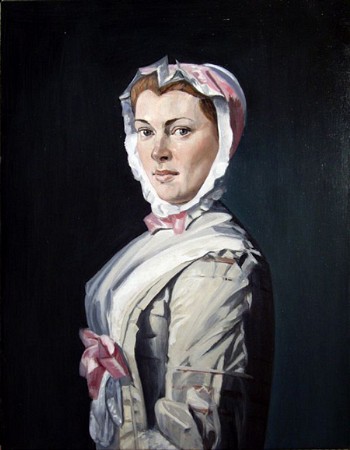AFTER YOU
Richard McWhannell, Cat Auburn is Allan Ramsay’s ‘Anne Bayne’
AFTER YOU: Copying, Quoting and Homage in Historical and Contemporary Art
23 March – 23 July 2013
Drawn from the Sarjeant Gallery Collection and loans from artists and dealer galleries throughout New Zealand, After You considers the impact artists have on each other’s practice. Art is never created in a vacuum. From Old Masters to art students artists compare themselves to, and find inspiration in, the work of those who came before. Copying has an important place in art history, particularly in New Zealand, as the primary way we engage with ‘Old Master’ and international works is through copies, text book reproductions and the internet.
In some cases an individual artist can become so famous and popular that his or her art is used as a cultural yardstick for greatness. In the New Zealand art context this figure is undoubtedly Colin McCahon. Today a New Zealand artist who uses text in an image or creates a monochrome landscape is invariably compared to McCahon. In this exhibition the works of Dick Frizzell, John Reynolds, Robin White, Nigel Brown and Sarah Buist are used to explore McCahon’s influence.
The work of another artist can act as a jumping off point, a catalyst, for work. Artists in this exhibition, such as Andrea Gardner, Hamish Tocher and Richard Reddaway use another artist’s work as a medium through which to explore and expose archetypes and themes common throughout history. We have an established visual language through which we understand the world, and art works become part of this common language. Artists tap into and highlight this shared comprehension through quoting the work of other art works. We understand that a visual reference to a Goya work speaks to a social and political conscience in art, or that a depiction of a man smoking a pipe comes from a tradition of portraiture that reveals the nature of the sitter.


